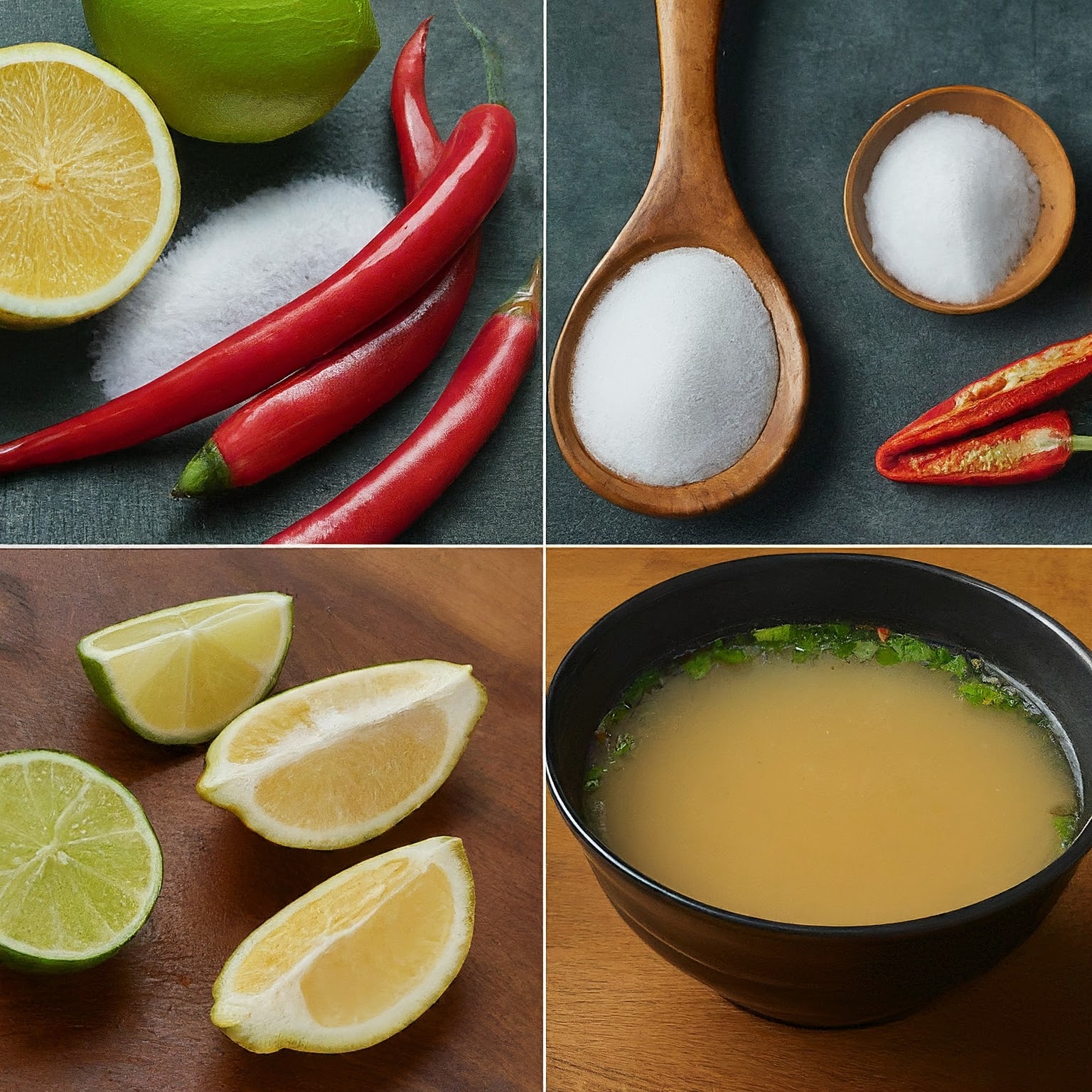Cooking is more than just following recipes; it’s an art form where various elements come together to create a symphony of flavors on your plate. At the heart of this culinary symphony lies the concept of flavor balance, the delicate interplay of sweet, salty, sour, and spicy elements that creates a harmonious and enjoyable eating experience.
The Language of Taste:
Our sense of taste is a complex system, with our taste buds identifying five basic tastes: sweet, salty, sour, bitter, and umami. These fundamental tastes interact with each other in fascinating ways, influencing our perception of a dish’s overall flavor profile.
- Sweet: Evokes feelings of pleasure and satisfaction. Examples include sugar, honey, fruits.
- Salty: Enhances other flavors and creates a sense of fullness. Examples include salt, soy sauce, miso paste.
- Sour: Adds brightness and cuts through richness. Examples include citrus fruits, vinegar, yogurt.
- Spicy: Creates a tingling sensation and adds heat. Examples include chili peppers, ginger, wasabi.
- Umami: Often called the “savory” taste, it’s associated with richness and depth. Examples include meat, cheese, mushrooms.
The Art of Orchestration:
Achieving flavor balance is akin to conducting an orchestra. Each element – sweet, salty, sour, and spicy – plays a crucial role, and the true magic happens when they harmoniously complement each other. Consider these tips:
- Start with a base: Many dishes benefit from a solid foundation of savory flavors, often built with umami-rich ingredients like broths, sauces, or seasoned vegetables.
- Build the layers: Gradually introduce other taste elements, tasting and adjusting as you go. Adding a pinch of salt can elevate sweetness, while a squeeze of lemon can cut through richness.
- Embrace experimentation: Don’t be afraid to experiment! Start with small adjustments and observe how different elements interact.
- Balance the heat: Spicy flavors can easily overpower others. Introduce spice gradually and consider pairing it with cooling elements like yogurt or cucumber.
Common Mistakes to Avoid:
- Over-reliance on a single taste: While boldness can be desirable, a dish with overwhelming sweetness, saltiness, or sourness can be unpleasant.
- Underseasoning: Fear of adding too much seasoning can lead to bland and uninspired dishes. Taste often, adjust gradually, and remember, you can always add more, but taking away is trickier.
- Ignoring umami: The savory quality of umami can significantly enhance the overall depth and complexity of a dish.
Techniques to Enhance Flavor:
- Caramelization: Browning ingredients like onions and garlic unlocks sweetness and complexity.
- Acidification: Adding a touch of citrus or vinegar can brighten flavors and cut through richness.
- Fermentation: Processes like fermenting vegetables or using fermented products like yogurt introduce depth and tanginess.
The Fifth Element: Umami
While sweet, salty, sour, and spicy often take center stage, umami plays a crucial supporting role. This savory taste, present in broths, cheeses, and meats, adds depth and richness, rounding out the flavor profile and creating a more satisfying experience.
Unleashing Your Inner Culinary Maestro:
By understanding taste perception and mastering the art of flavor balance, you can transform your cooking from simply following recipes to creating truly captivating culinary experiences. Experiment, explore, and embrace the symphony of flavors waiting to be orchestrated in your kitchen!




